GEORGIA BASIN INTER-REGIONAL EDUCATIONAL INITIATIVE: “Inter-regional collaboration allows us to support each other in addressing problems that transcend boundaries,” stated Zoe Norcross-Nu’u, Comox Lake Watershed Protection Coordinator
Note to Reader:
Published by the Partnership for Water Sustainability in British Columbia, Waterbucket eNews celebrates the leadership of individuals and organizations who are guided by the Living Water Smart vision. The edition published on March 19, 2024 featured Zoe Norcross-Nu’u, watershed protection coordinator with the Comox Lake Regional District. She reflects on her experience as a college instructor in Hawaii in the 2000s and how it has influenced her thinking on motivating changes in behaviour through hope and optimism rather than doom-and-gloom.
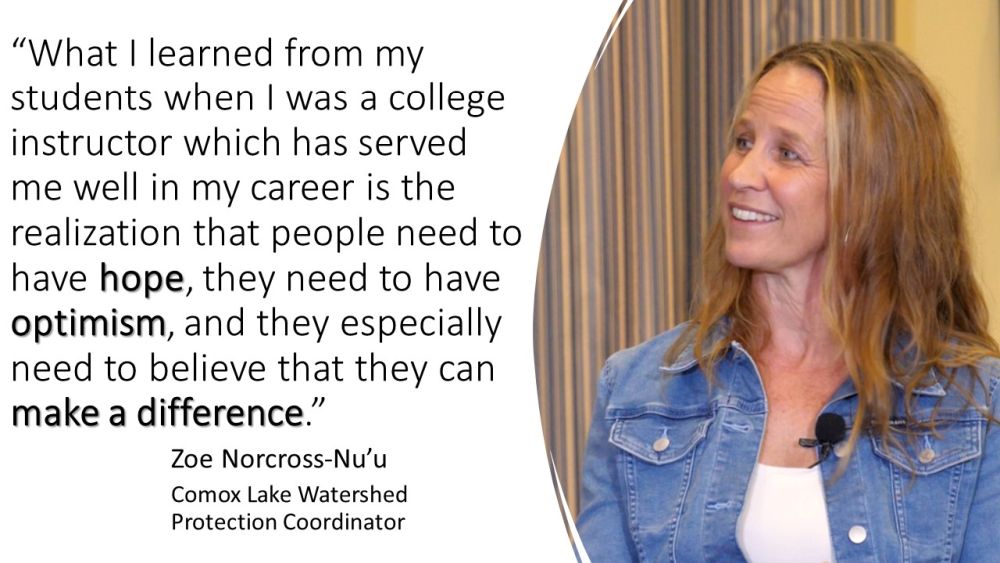
Hope and optimism do make a difference
Zoe Norcross-Nu’u, a marine scientist who previously taught at the University of Hawaii Maui College, is in her second decade with Comox Valley Regional District after joining in 2012. Her responsibilities revolve around the Comox Lake Watershed Protection Plan which was completed in 2016.
Zoe is the watershed protection coordinator and has been involved since the plan’s inception. Watershed protection is her passion. “My work and my recreation take place in the same place. I feel so fortunate to be able to work in these places that mean so much to me,” emphasizes Zoe Norcross-Nu’u. She also oversees the Connected by Water program.
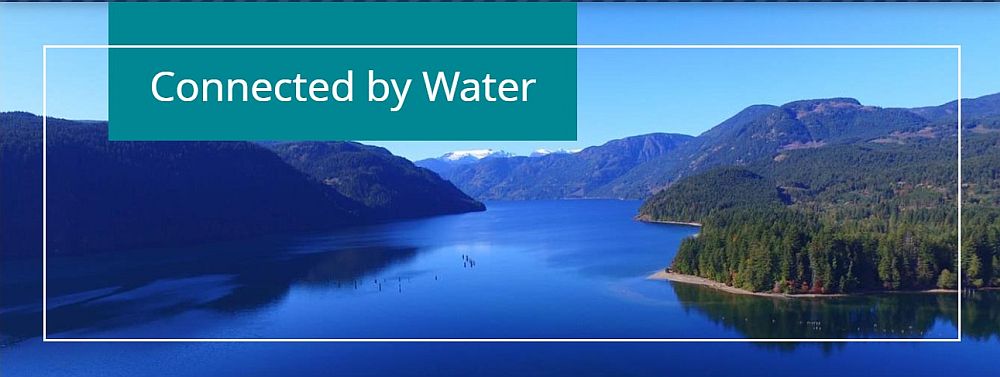
Comox Lake Watershed Protection Plan
“Comox Lake provides drinking water for 45,000 people in the Comox Valley. The essence of the story is that the Watershed Advisory Group delivered a plan that is fully implementable.”
“The watershed plan is truly a collaborative outcome. And most importantly, it is currently fully funded, although without a dedicated watershed service, this funding depends on the support of our elected officials. Because the advisory group represented a broad variety of interests, the plan has a very high level of community support.”
“The watershed plan is a living document. We made that clear upfront. We also committed to revisiting the content as necessary to keep the plan relevant and to address changing conditions. In 2022, we updated the plan.”
“The risk ratings are a big part of the plan because they dictate priorities and how they are addressed. For this reason, the document has become really important in the decision process.”
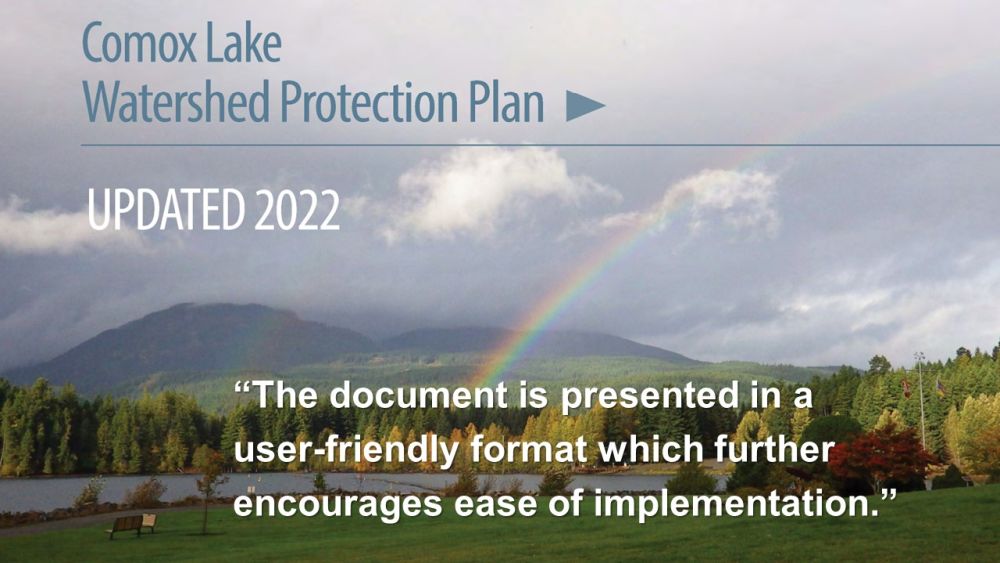
EDITOR’S PERSPECTIVE / CONTEXT FOR BUSY READER
“In 2008, the four Comox Valley local governments stepped up and volunteered to be a demonstration region for rollout of the provincial Living Water Smart and Green Communities initiatives. As of 2012, this “convening for action” process morphed into the present-day Georgia Basin Inter-Regional Educational Initiative, aka the IREI,” stated Kim Stephens, Waterbucket eNews Editor and Partnership Executive Director.
“While inter-regional collaboration in combination with her watershed coordinator role was the context for my conversational interview with Zoe Norcross-Nu’u, the story behind the story went in an unexpected direction.”
“It started innocuously when I asked, what is the story behind you teaching at the University of Hawaii Maui College? Before we get to that, however, Zoe’s thoughts on the Comox Lake Watershed Protection Plan are summarized below.”
“At the end of our conversation, Zoe connected her reflections about Hawaii and interweaving Indigenous Knowledge and Western Science to Blue Ecology, the water-first approach that bridges cultures. Zoe represents the Comox Valley Regional District on the Partnership’s Watershed Moments Team.”
What it means for local governments to have a united inter-regional front
“The Comox Valley approach to watershed protection has benefitted, and continues to benefit, from relationships that we have developed over years with our peers in other regional districts.” explains Zoe Norcross-Nu’u.
“These relationships are the result of inter-regional collaboration made possible by the IREI. It is really valuable how the other regions have become an integral part of a coordinated approach in responding to the provincial government.
Inter-regional collaboration is powerful:
“When the regional districts on the east coast of Vancouver Island present a united front in response to requests from the Province, it is so much stronger than us trying to speak as an individual local government, especially for a small one within a larger provincial context when you are one among many.”
“Inter-regional collaboration allows us to support each other in addressing problems that transcend boundaries. In a provincial context, we are just one tiny voice. When the regional districts on the east coast of Vancouver Island unite behind an issue, our voices can be so much more powerful.”
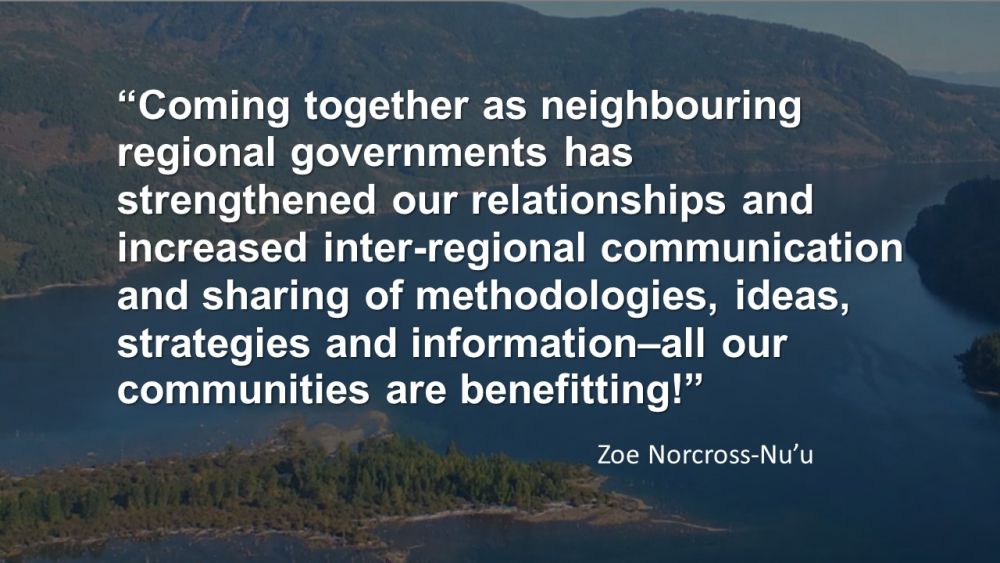
Connected by Water: Hope and optimism do make a difference
“The story that Zoe shared with me about her time in academia was fascinating and powerful. Her passion in describing the progression in her teaching experience over an 8-year period in the 2000s captivated me,” continued Kim Stephens.
“Zoe’s academic career had three distinct phases which built to the theme that hope and optimism do make a difference. Insights gained along the way serve Zoe well in her current watershed coordinator role.”
“In her first three years, Zoe taught those who just wanted to take an easy science course. Seeking an opportunity to create a more meaningful learning opportunity, she developed a course called Topics in Sustainability, which was structured as a speaker series.”
“Through that experience, she learned the importance of finding the silver linings. A thesis class was the rewarding phase of her academic career when Zoe mentored passionate young professionals.”
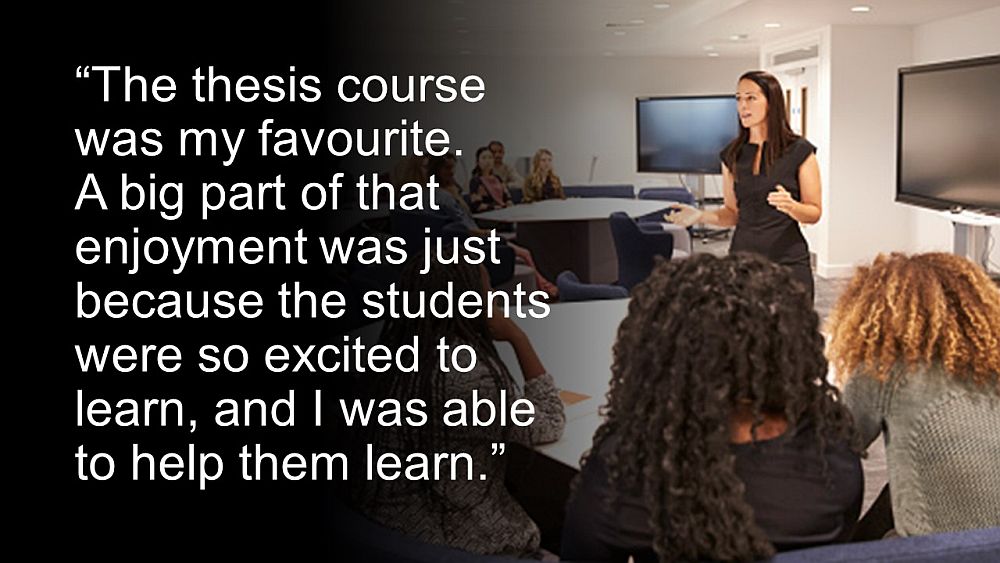
STORY BEHIND THE STORY: Hope and optimism do make a difference – extracts from a conversation with Zoe Norcross-Nu’u
“Moving to Hawaii had not been my plan. When I was an undergrad at SFU, I found out the University of Hawaii was a sister school to SFU. Because I was on a President’s Scholarship, it meant that my scholarship could be transferred to Hawaii,” explains Zoe.
“It was only meant to be for one year! But I enjoyed it so much that I transferred to the University of Hawaii. I finished my bachelor’s degree in 1999 and my master’s degree in 2001. Then moved to Maui where I worked for eight years until 2009.”
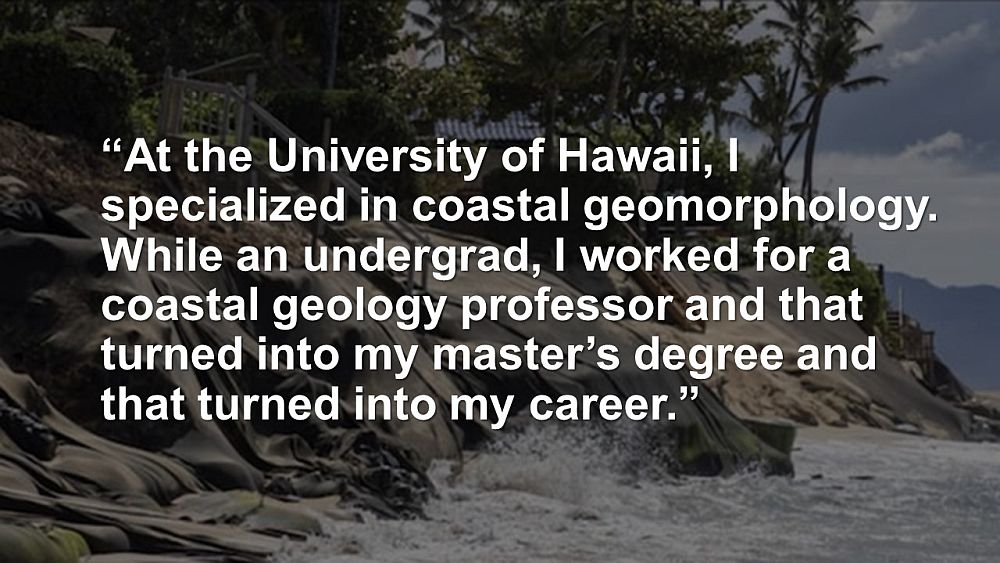
Challenges in teaching Oceanography 101 to arts students
“After I graduated with my master’s degree in geology and geophysics, I was offered a job as University of Hawaii Extension faculty on the island of Maui.”
“My job was basically to be the liaison between the government agencies, the University, the public, private industry, and private landowners. Basically, everybody who had anything to do with the coastal zone.”
“It was an outreach and education position. But one of the criteria for that position was to teach one course per semester at Maui College.”
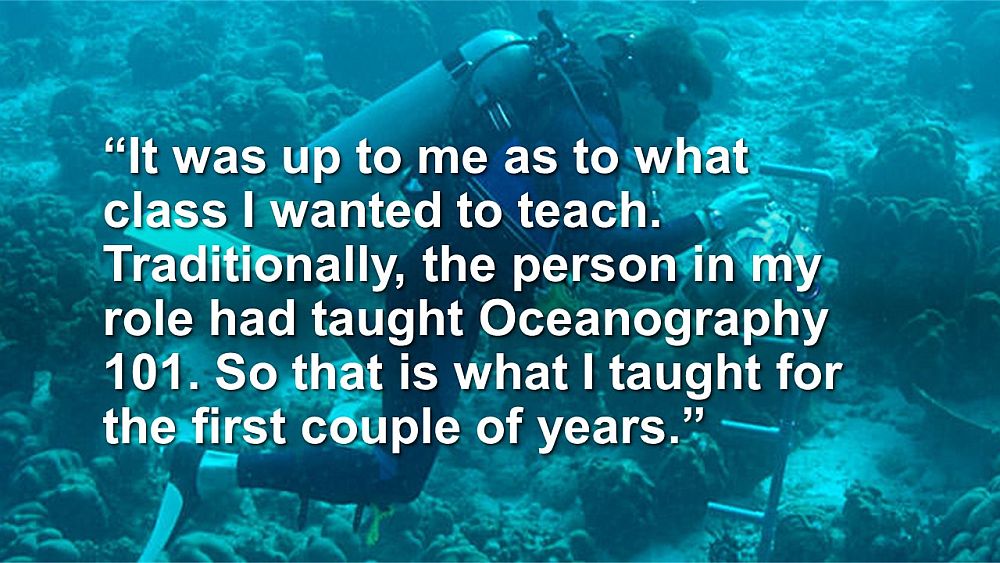
“That was fine, but it was a liberal arts college and the students had to take a science course as part of their graduation requirements. Many of them would sign up for Oceanography 101 because it was the only science course that did not have a lab component.”
“And so, we had a lot of students who had no real interest in oceanography. They were taking it because they had heard it was the science course with the least amount of work. Many of the students did not want to be there.”
“Perhaps I should have figured out more ways to inspire them, but I felt like the experience was not the greatest for the students or for me, despite the fact that I love oceanography.”
Zoe’s course, Topics in Sustainability, was ahead of its time in the early 2000s
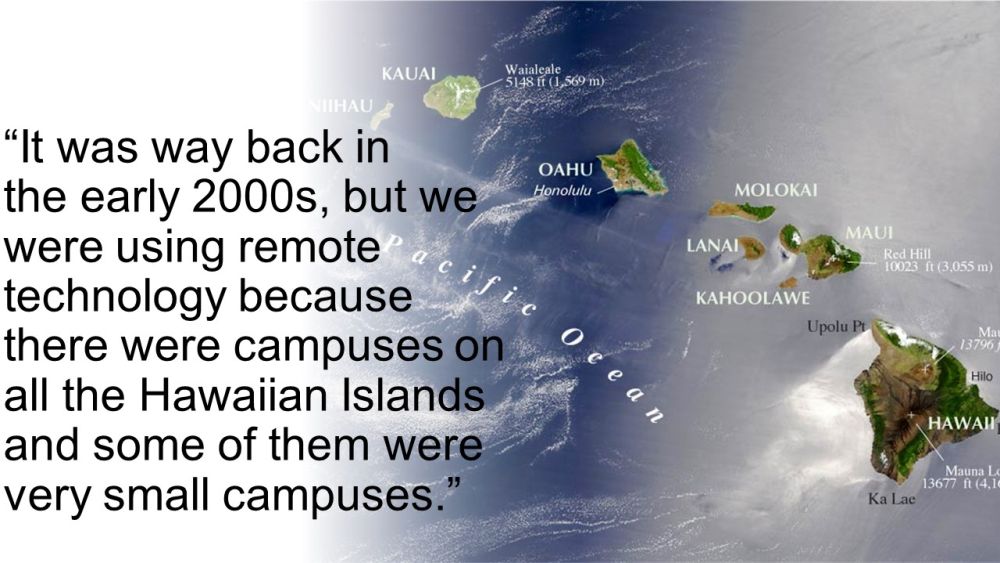
“The university wanted to make my class accessible to students on all the islands. Therefore, we could bring in guest speakers from other islands who had something to share about sustainability related issues or initiatives that were happening in the Hawaiian Islands.”
“That was a dream teaching job for me because I got to learn so much from some pretty amazing people about a wide variety of topics. And being that it was in the early 2000s, topics like climate change and sea level rise were only just emerging as really important issues.”
“We had a chance to really highlight those issues and draw attention to them. One thing that I learned was that if an instructor only presents doom-and-gloom scenarios, your students get pretty discouraged and upset.”

Hope and optimism lead to adaptive outcomes
When students are excited to learn, helping them learn is so enjoyable
“I also taught a Marine Science Thesis Class at the college. That was my favourite because the students were super excited and passionate about their work.”
“Basically what they were doing was choosing a topic that they wanted to study. It was a small group of 10 students. And my job was to help them learn how to design a research project, carry out the research, gather data and interpret results, formulate conclusions and then write about them in a scientific way.”
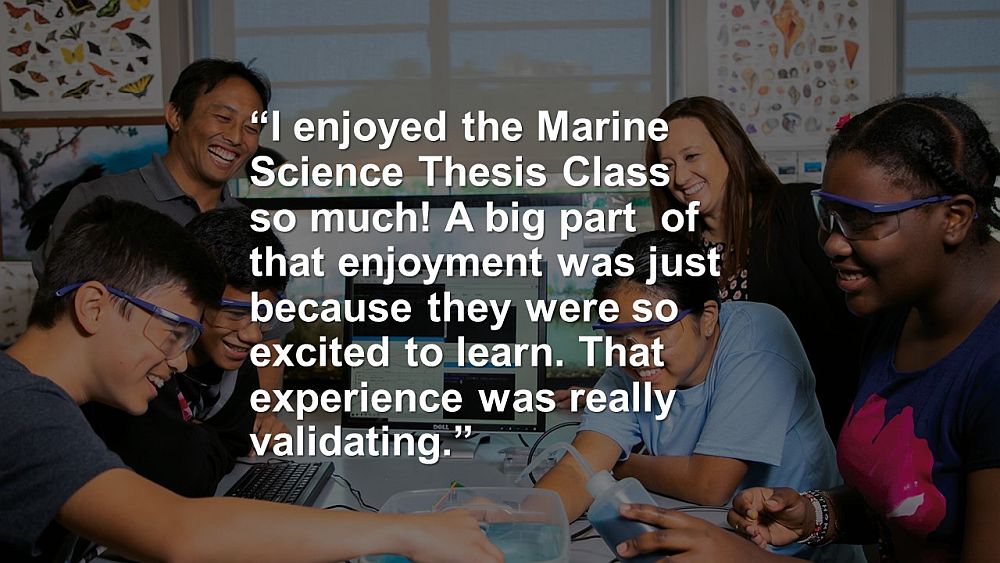
“It was validating for several reasons. You are helping young adults become scientists and learning to distinguish between reliable and unreliable sources of information, and supporting growth of the scientific community.”
“And you are helping them become the people that would help us figure out how to address some of the complex local and global issues we currently face.”
“That also was an amazing teaching experience. I really enjoyed teaching that class. And the students were just so grateful for the opportunity to learn how to carry out research and contribute to the scientific understanding and knowledge base of a particular topic.”
Interweaving of Western Science and Indigenous Knowledge would benefit water resource management
“One of the things that made this last teaching experience really special was that several of these were students from very small communities. And many were the first in their families to gain higher levels of education.”
“It was an honour to provide these students with an experience that was so new to them and watch them become more comfortable with the concepts of inquiry, and trial and error. That it is normal to have to explore many different pathways and ideas when doing research, and that you still learn something valuable when things do not turn out the way you expected.”
“When I look back, and knowing what I know now, what I should also have been doing is to encourage them to explore and incorporate traditional knowledge, where appropriate, on the topics they were investigating.”
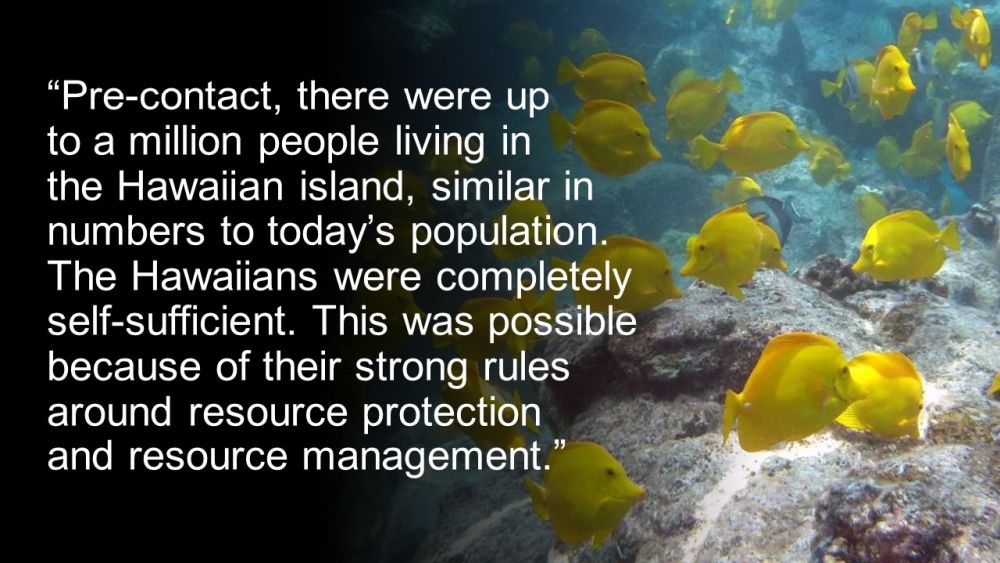
“Pre-contact, the Hawaiian people took resource management extremely seriously. The penalties for breaking the rules around resource management were very serious, sometimes even resulting in execution. Their resource management was all based on traditional science.”
“We should have been encouraging these students to explore this, in a sensitive manner, during their investigations. Back then, we were not doing a very good job of learning from traditional knowledge.”
Blue Ecology, a water-first approach
“But now, especially with Michael Blackstock’s teachings about Blue Ecology and building bridges between cultures, that is the path that we should be taking in British Columbia.”
“We are still hoping to move forward with Indigenization of the Comox Lake Watershed Protection Plan. That is a long-term objective we hope to achieve in partnership with the Kʼómoks First Nation,” concludes Zoe Norcross-Nu’u.
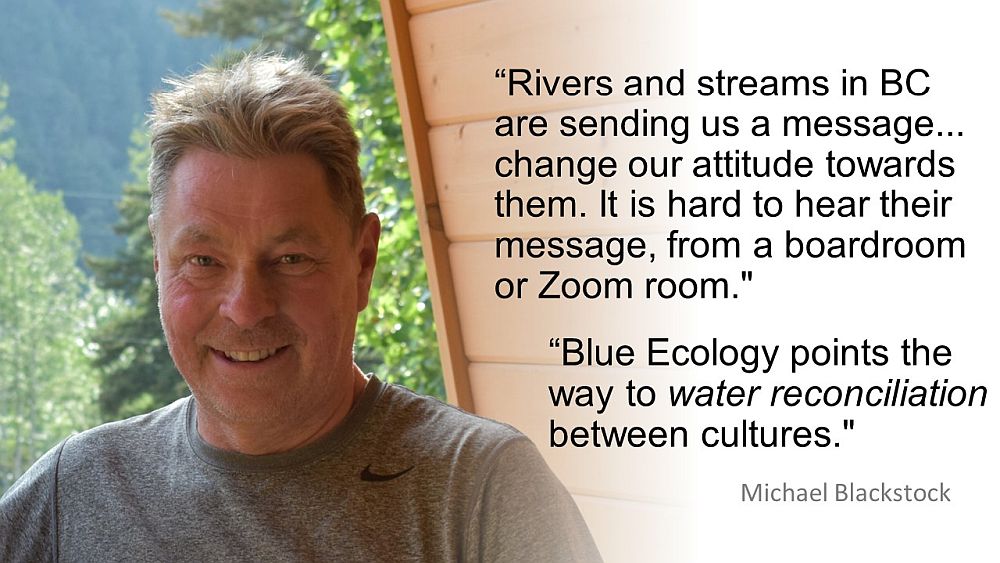
Living Water Smart in British Columbia Series
To download a copy of the foregoing resource as a PDF document for your records and/or sharing, click on Living Water Smart in British Columbia: Hope and optimism do make a difference.
DOWNLOAD A COPY: https://waterbucket.ca/wcp/wp-content/uploads/sites/6/2024/03/PWSBC_Living-Water-Smart_Zoe-Norcross-Nuu_hope-and-optimism_2024.pdf


